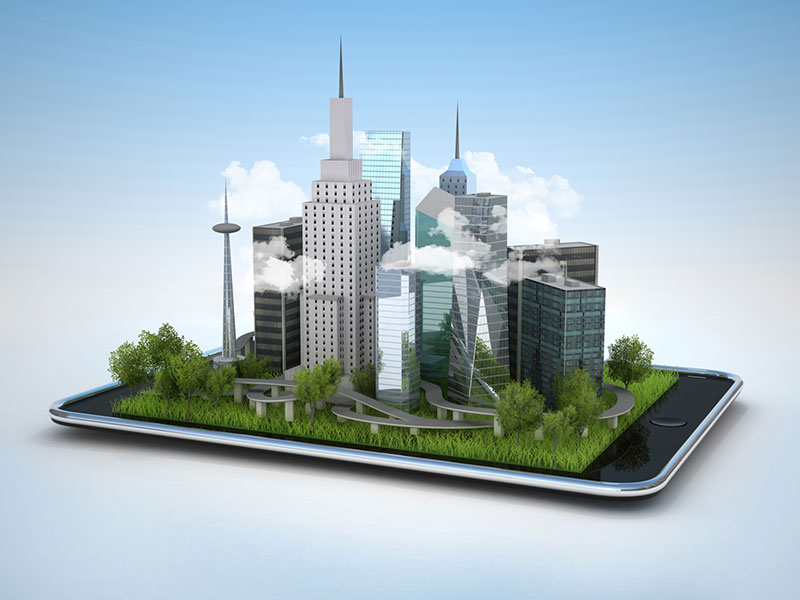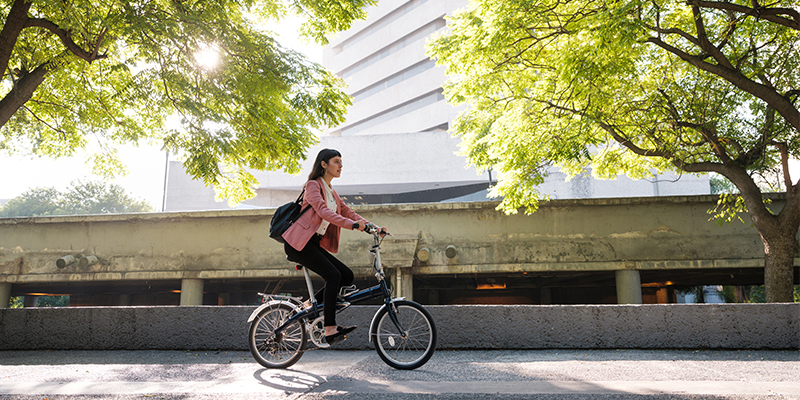Various types of street furniture — the benches, tables, bus stops, signs, lightposts, taxi stands and even waste receptacles placed in public and private outdoor spaces by cities and property owners — are gradually joining the vast “Internet of Things.” These cloud-connected devices offer property owners and municipalities new opportunities to make their citizens’, tenants’ and residents’ lives more comfortable while also, in some cases, collecting useful data.
One such product, the Soofa bench, is profiled in the current issue of NAIOP’s Development magazine. “Smart Street Furniture” explains how this “solar-powered charging bench enables people to stay digitally connected, through USB charging for tablets and phones, as well as physically connected, by offering them a comfortable place to sit and converse.” Soofa’s designers have partnered with property owners, including LeFrack and L&L Holding Co. in New York City and Beacon Capital Partners in Boston, to incorporate Soofa smart benches in their properties. The benches also contain sensors that can collect and transmit data on air quality, pedestrian activity and more via the cloud, providing information that helps building owners understand how their properties are being used.
While not yet common, plenty of other examples of smart street furniture can be found in cities throughout the world.
New York City recently rolled out beta testing for its LinkNYC project, an ambitious scheme that’s transforming more than 7,500 pay phones throughout the city into free superfast gigabit Wi-Fi hot spots. Each “Link” is a nine-and-a-half-foot-tall monolith featuring an Android tablet as well as two video screens that play advertisements and public service announcements. In addition to accessing Wi-Fi simply by standing near the tower, pedestrians can use the tablet to make free phone calls to anywhere in the U.S. They can also charge their own devices at one of two USB chargers. The city and CityBridge — a consortium of technology companies — unveiled the first few on Third and Eighth avenues between 14th and 58th streets in Manhattan last month; they plan to have at least 510 in place throughout all five boroughs by July.
In Los Angeles, Mayor Eric Garcetti’s Great Streets Initiative aims to enhance transit riders’ experiences by providing Soofa smart benches and smart bus shelters — with free Wi-Fi, USB charging ports, energy-efficient LED lights and integrated real-time bus arrival information — in 15 locations throughout the city. The first Soofa bench and bus shelter were unveiled last September; the rest will be rolled out by this summer.
In the U.K., Transport for London is testing solar-powered e-paper screens — digital replacements for printed timetables — at four bus stops. The e-reader-style displays at Waterloo Bridge, Parliament Square, Piccadilly Circus and Sloane Square provide real-time travel information as well as up-to-date schedules and route maps, and may be expanded to more of the transit system’s 19,000 bus stops if the technology proves viable.
In Tokyo, solar-powered mobile phone-charging stations known as City Change have been installed at two test sites, Tokyo Tower and the Toranomon Hills business complex. The stations are a joint project of the Tokyo Metropolitan Government and Sharp Corp., which manufactures them. They are equipped with an LED light that enables them to double as streetlights and were designed to withstand massive earthquakes and function as emergency power sources during a disaster. Within the next year, the city will decide whether to install additional stations at other sites. Interested in learning about other types of smart streetlights? See “Lighting the Way to a Brighter — and Smarter — Future.”
Solar-powered, Internet-connected trash bins and smart parking meters that can guide drivers to available spaces are just two other examples of smart street furniture available today. These multifunctional devices present opportunities for developers, property owners and municipal leaders to replace obsolete infrastructure as they incorporate a multitude of uses into devices that formerly served only a single purpose — while saving or even making money. What other types will be developed within the coming years and decades? The sky’s the limit.














